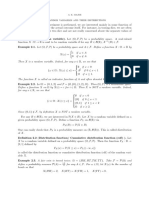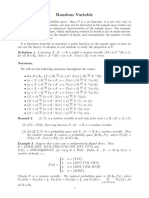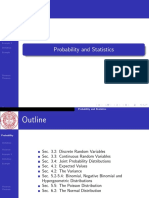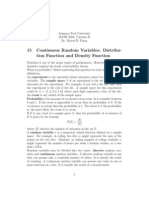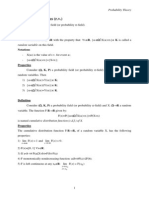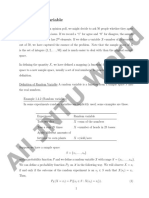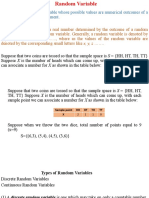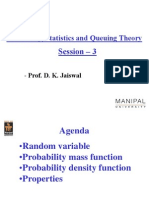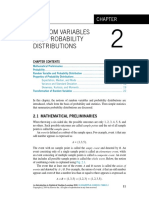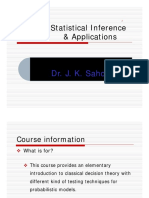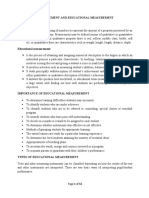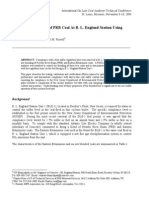0% found this document useful (0 votes)
15 views32 pagesChapitre 01 Random Variables
The document provides an overview of random variables, including definitions, properties, and examples related to discrete and continuous random variables. It explains concepts such as cumulative distribution functions, probability distributions, and the characteristics of random variables. Additionally, it discusses the induced probability and the indicator function in the context of probability spaces.
Uploaded by
ayanacer70Copyright
© © All Rights Reserved
We take content rights seriously. If you suspect this is your content, claim it here.
Available Formats
Download as PDF, TXT or read online on Scribd
0% found this document useful (0 votes)
15 views32 pagesChapitre 01 Random Variables
The document provides an overview of random variables, including definitions, properties, and examples related to discrete and continuous random variables. It explains concepts such as cumulative distribution functions, probability distributions, and the characteristics of random variables. Additionally, it discusses the induced probability and the indicator function in the context of probability spaces.
Uploaded by
ayanacer70Copyright
© © All Rights Reserved
We take content rights seriously. If you suspect this is your content, claim it here.
Available Formats
Download as PDF, TXT or read online on Scribd
/ 32



